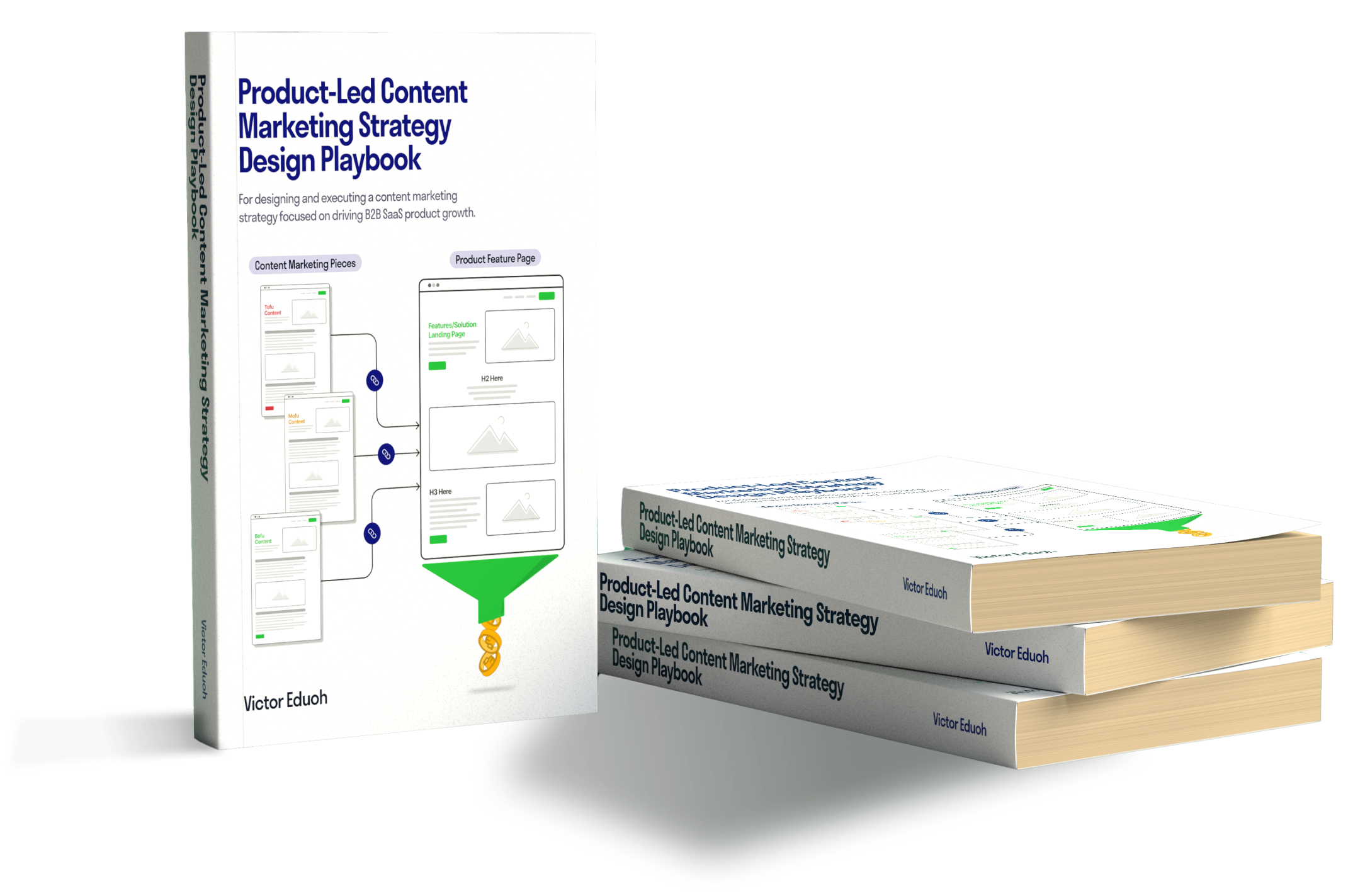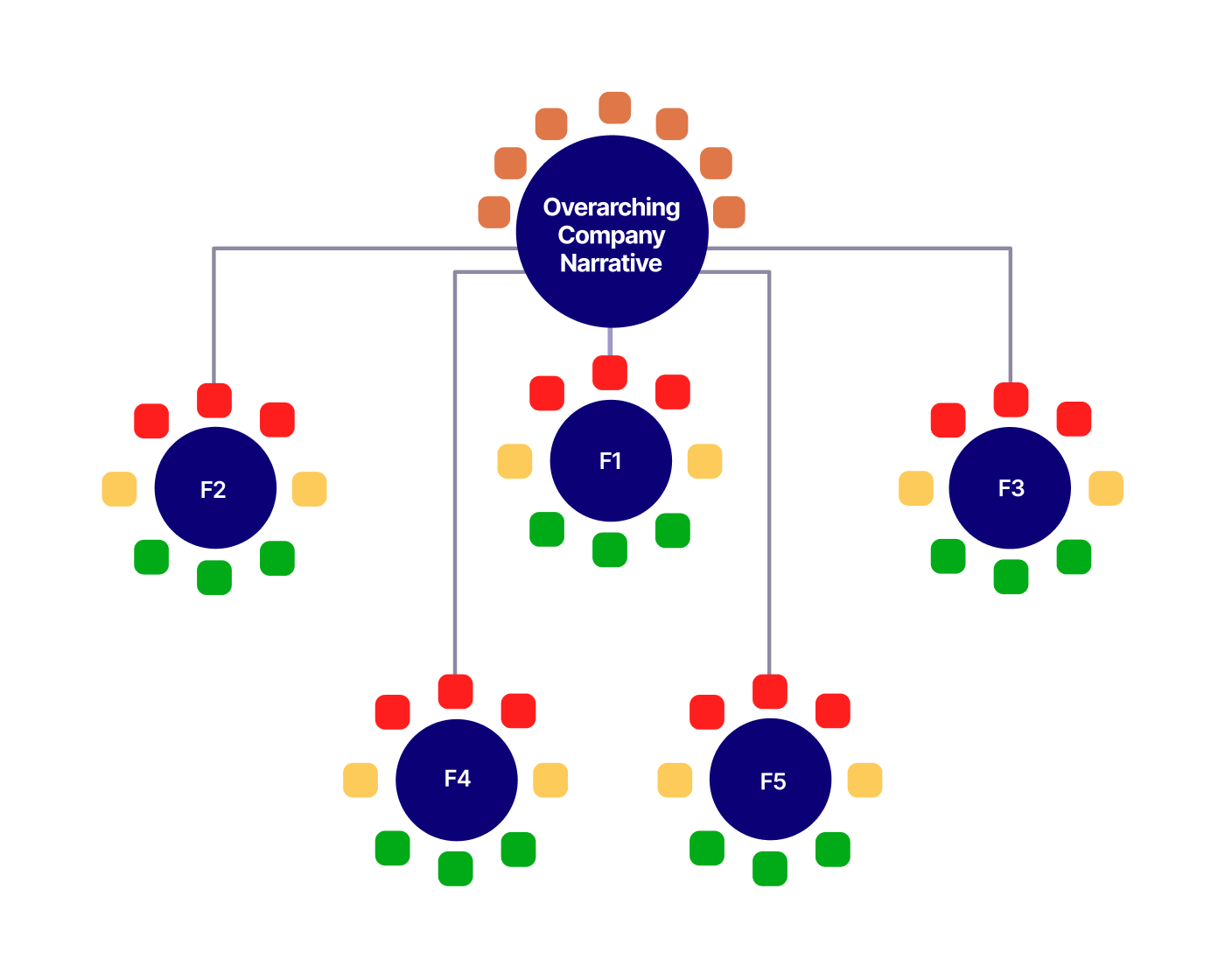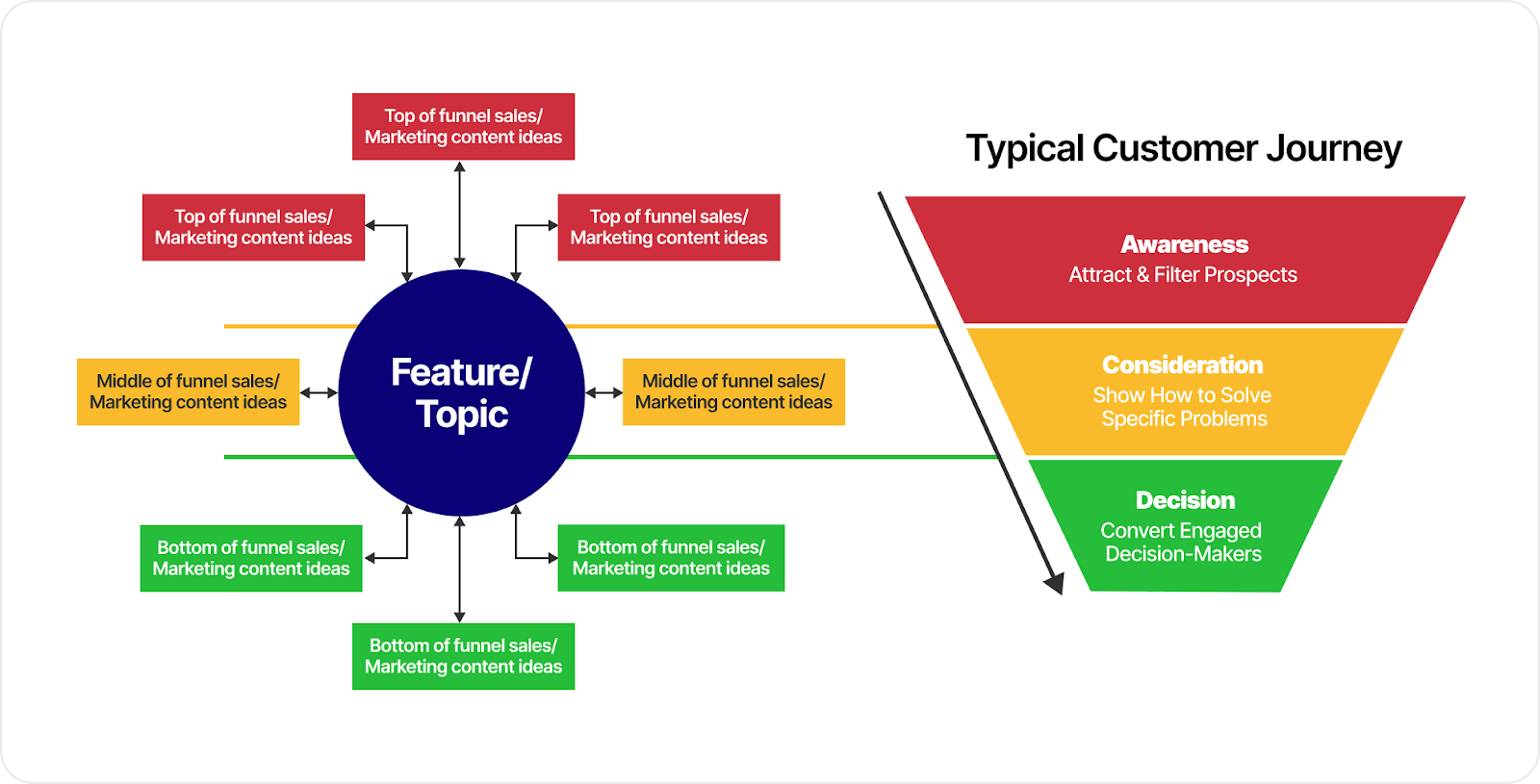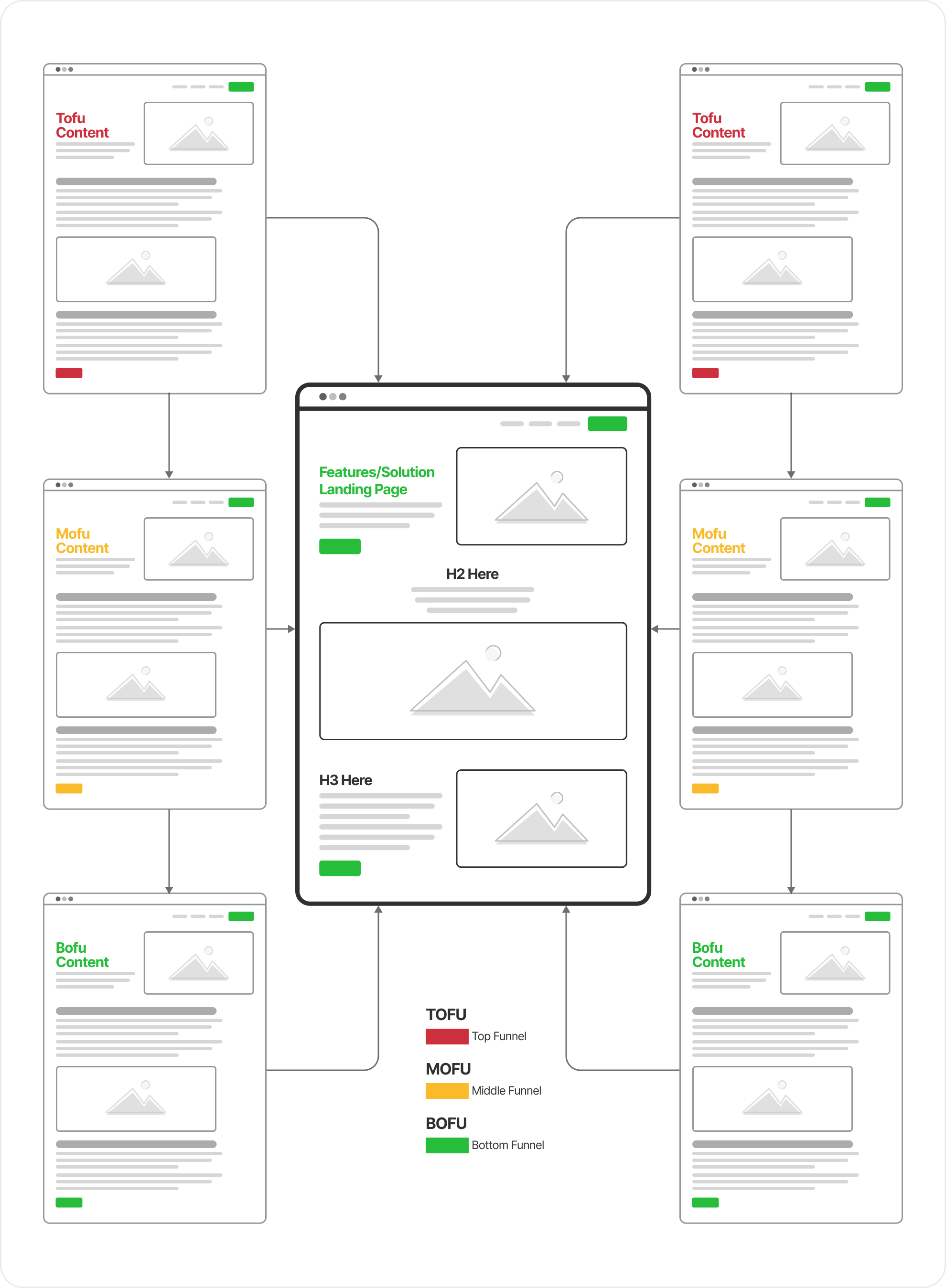The Product-Led Storytelling Newsletter
Product-Led Content Marketing Strategy Design Playbook
Design and execute a content marketing strategy explicitly focused on growing a B2B SaaS product, not SEO topics.
The days of ranking content solely for SEO topics are over. Today, content must also get your product features––what prospects need to solve their problems––discovered. This playbook outlines how we design such content marketing strategies, using the Topic Clusters Content Strategy (TCCS) Framework. Learn how to use your unique narrative and product features––not SEO topics––as design pillars, so you can execute content that drives SaaS growth.

We used VEC Studio to develop a content marketing strategy for our website and digital channels, and we’ve had nothing but praise for Victor and his team. [Their TCCS content marketing strategy design and execution approach] helped us really understand how to craft content, what the goals should be, and setting up those foundational things most content teams don’t necessarily look at.
Kristen Hicks, Fmr. Strategic Marketing Director, Blackthorn.

Start designing a content marketing strategy that drives product growth
Fill out the short form and hit “Send My Copy” to get your copy of the Product-Led Content Marketing Strategy Design Playbook.
NB: Downloading this playbook subscribes you to VEC Studio’s Product-Led Storytelling Newsletter. Each monthly edition explores the art of using stories to craft content and sales copy that grows tech products. No spam, one-click unsubscribe.
Why download this playbook?You’ll make your product features–not SEO topics–discoverable.
This playbook details how to select growth-driven ideas and cluster content around your narrative and product features, not SEO topics. A few of the key insights detailed in the playbook are:
Align strategy to narrative
Finally go beyond traditional SEO-obsessed topic clusters. Design a content marketing strategy using your unique narrative and product features as pillars, guided by the Topic Clusters Content Strategy (TCCS) Framework.
Build feature-focused clusters
Avoid choosing content ideas solely based on generic search volume metrics. Learn to choose ideas that will increase feature adoption and group them by specific features that align with the customer journey stages.
Make features easily discovered
Your prospects read content to learn how to solve their problems. Learn how to redirect engaged readers to your product features that solve their problems, irrespective of their customer journey stage.

VEC Studio’s entire approach to content marketing strategy and content creation was seamless and meticulously crafted. The blog posts they crafted for Cyber Sierra effortlessly introduced our platform and features, highlighting its benefits while addressing the pain points of our target users.
Srividhya Khartik, Head of Marketing, Cyber Sierra.


Design a Product-Led Content Marketing Strategy focused on driving product growth
This playbook will teach you how. And it is free, if you download it today.
Crafted with ❤️ in Port Harcourt

